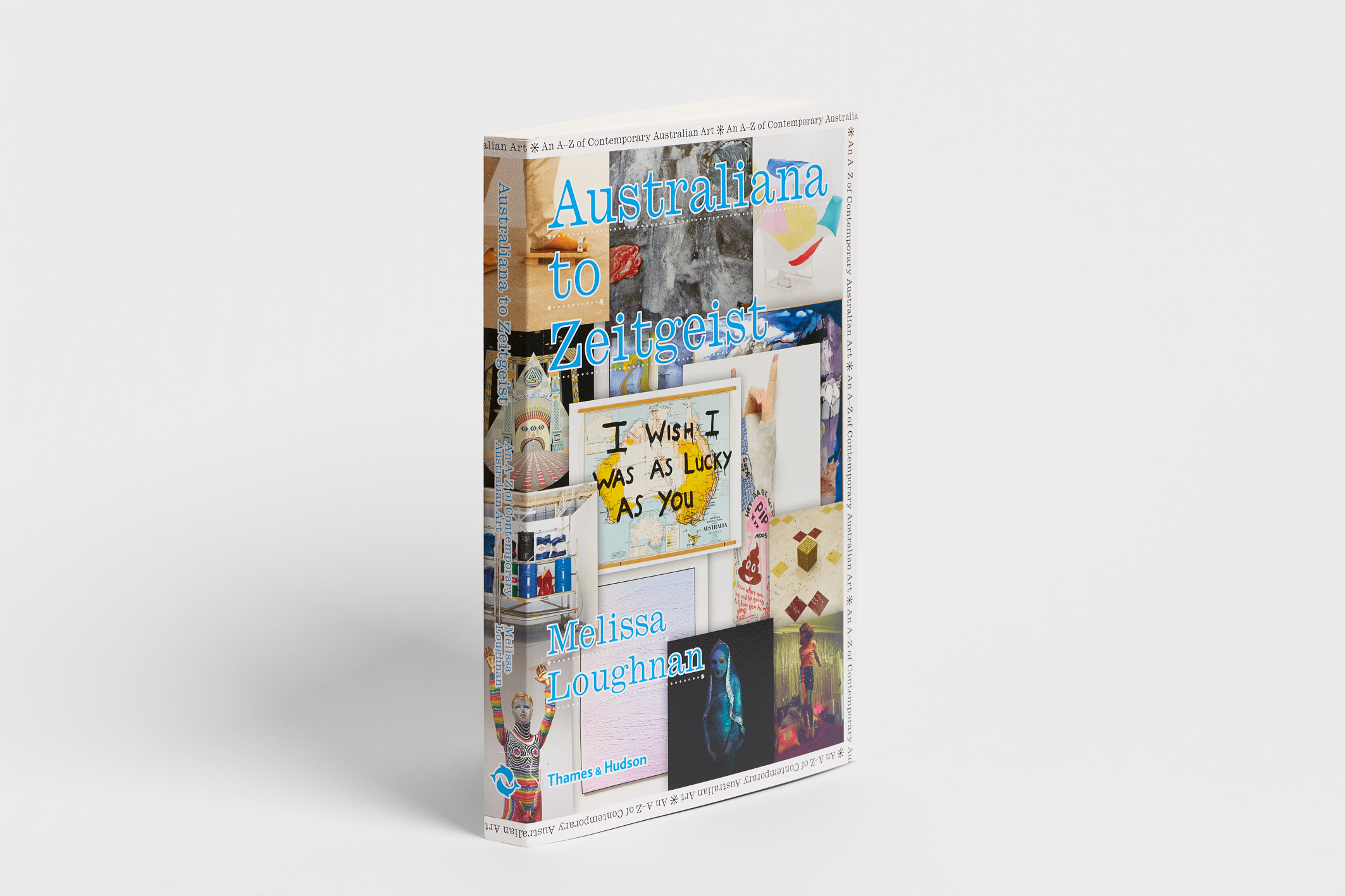Oh So Arty Editorial Coordinator, Sophie Weinstein, sat down with our Melbourne guide, Melissa Loughnan, to discuss her new book Australiana to Zeitgeist: An A-Z of Contemporary Australian Art.
Why do you think many critics have traditionally dismissed Australian art as derivative?
Historically, Australian artists have been led by the prevailing art movements of the UK, Europe and America. Our sense of national identity is also often shrouded by our commonwealth heritage. We tend to be looked upon as a small subsidiary of the UK, rather than a nation with its own unique cultural fabric.
How are you hoping to change the public’s opinions of Australian art with your new book?
Australiana to Zeitgeist focuses on a number of Australian artists who are practicing internationally, and are perhaps better known overseas than in their home country. Andy Boot, Ry David Bradley and Michael Staniak, who are featured in my ‘I for Internet’ chapter, are prime examples of this. It also focuses on artists whose practices are worthy of greater attention in a global context. Ultimately I hope that my book will contribute to a reappraisal of Australian art among international collectors and curators.
What inspired you to write this book? What void were you hoping to fill by publishing it?
My aim for the book was to present an alternative view on Australian art to other surveys that have been previously published, with less of the ‘usual suspects’. Additionally, as the Australian art world is quite small, the number of collectors and institutions that support it is also quite small. So I was also motivated to write the book in the hopes that it might increase the audience for, and eventually the support of, contemporary Australian art - both locally and internationally.
“Ultimately, my aim is for Australiana to Zeitgeist to provide an accessible introduction to the broad range of contemporary art practices in Australia today.”
As you have acknowledged, Australian art is often overlooked within the global art scene, what contributions do you think Australian artists can make to the international world of contemporary art?
There are a number of artists who mine Australia’s history and cultural fabric to make internationally relevant work. Helen Johnson, who features in my P for Painting chapter, is a good example of this. Her work explores ideas of Australia’s colonial history, the construction of national identity and our current political environment. She recently held a solo exhibition at ICA, London, and is currently exhibiting at the New Museum, New York.
Can you tell us about your arts initiative, Utopian Slumps?
Utopian Slumps opened as a non-profit curator-run arts initiative in 2007, focusing on early to mid career Australian artists through curated group exhibitions and a focus on art that is ‘of the hand’. The gallery shifted its model to commercial in 2010, where it maintained its focus on curated group exhibitions while representing seventeen artists from Australia and New Zealand. Utopian Slumps operated for eight years in total and participated in a number of art fairs locally and internationally, including Art Forum Berlin, Art Stage Singapore and Art Basel Hong Kong.
How did your experience at Utopian Slumps motivate you to write this book?
Through Utopian Slumps I came to know the Australian art scene intimately, and found that there were many artists that were deserving of greater attention, or who, in my opinion, had been overlooked. I have attempted to re-dress this balance, albeit from my singular perspective, through this book.
What criteria were you looking for in the artists who you included in the book?
The book focuses on artists who I see as unrepresented and under-represented. The book is thematic, which ultimately fed my selection of artists, seeking out the strongest examples whose works or practices sat within each theme. Ultimately, my aim is for Australiana to Zeitgeist to provide an accessible introduction to the broad range of contemporary art practices in Australia today.
Internationally you can purchase Melissa's book here and in Australia here.
Take a tour with Melissa to discover more!
All photos for this story are by Christo Crocker.



